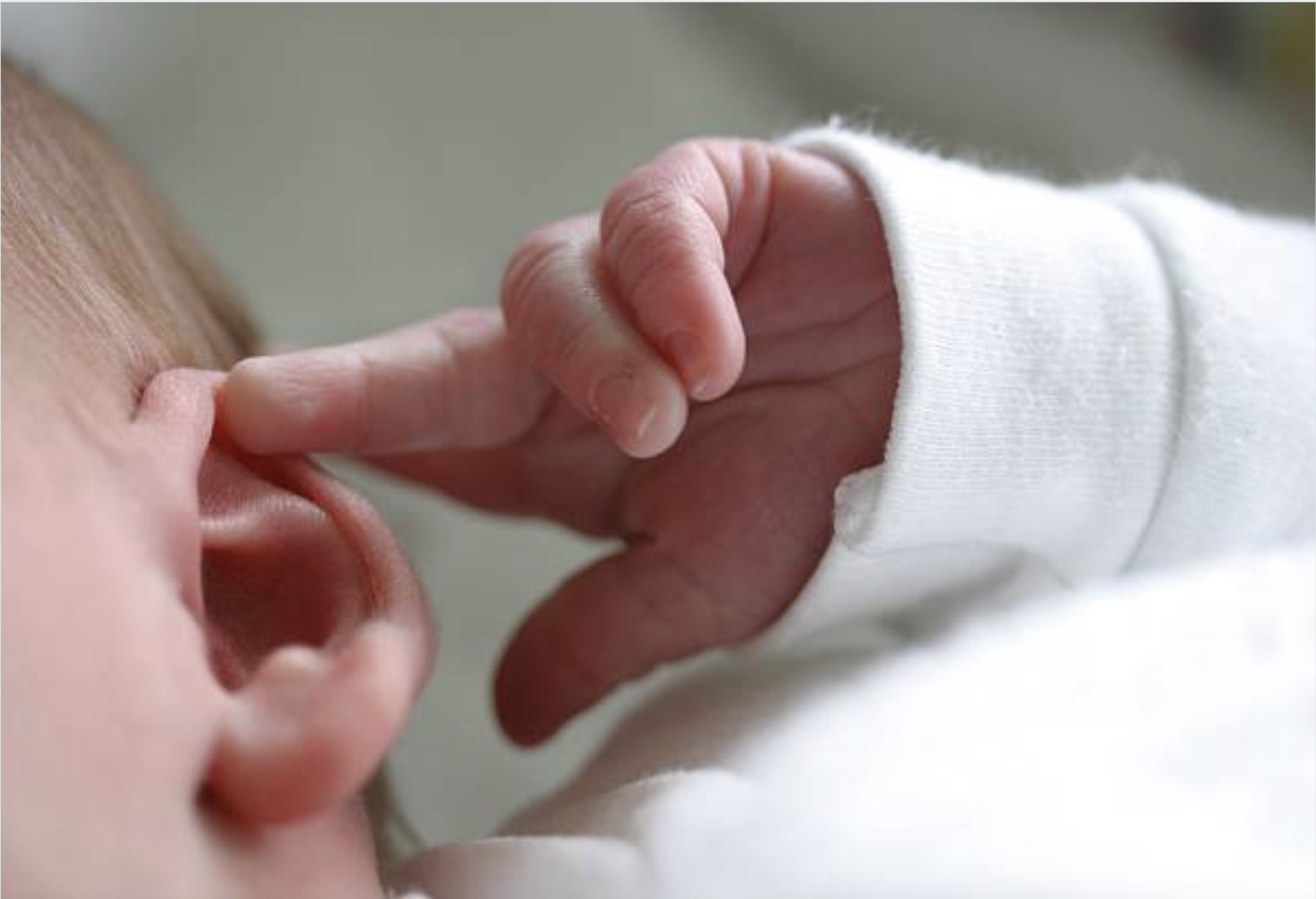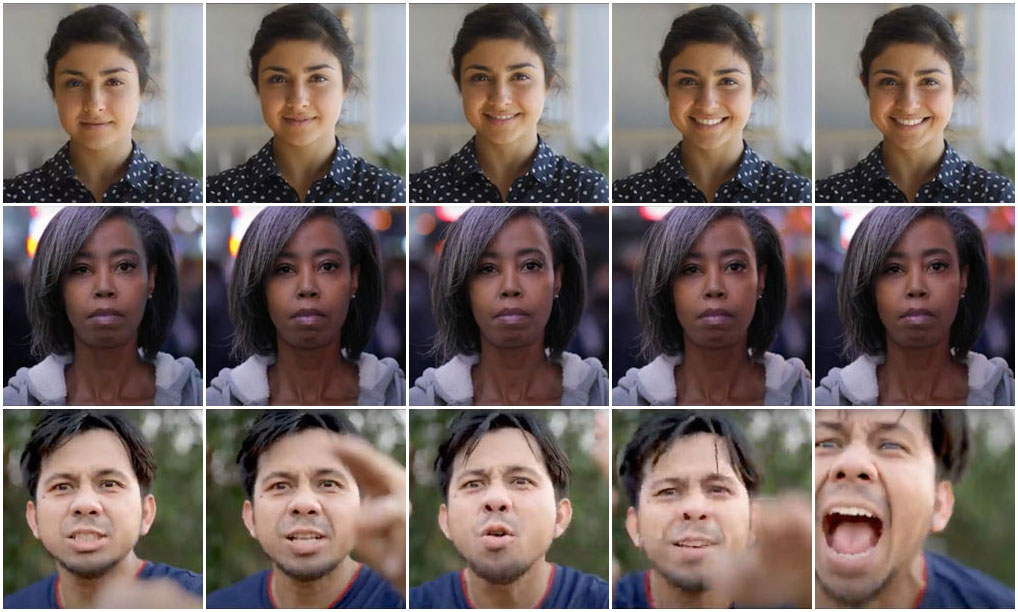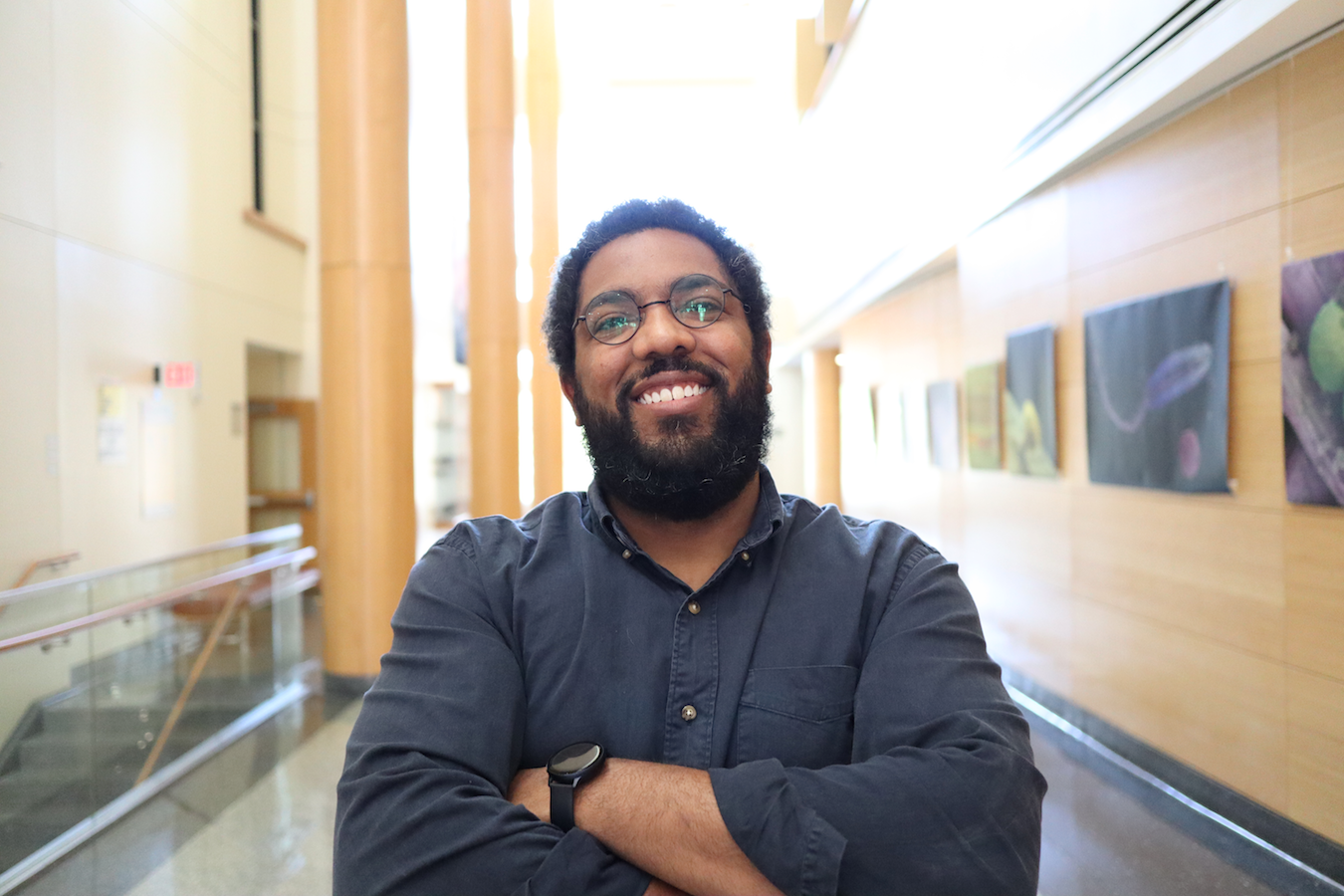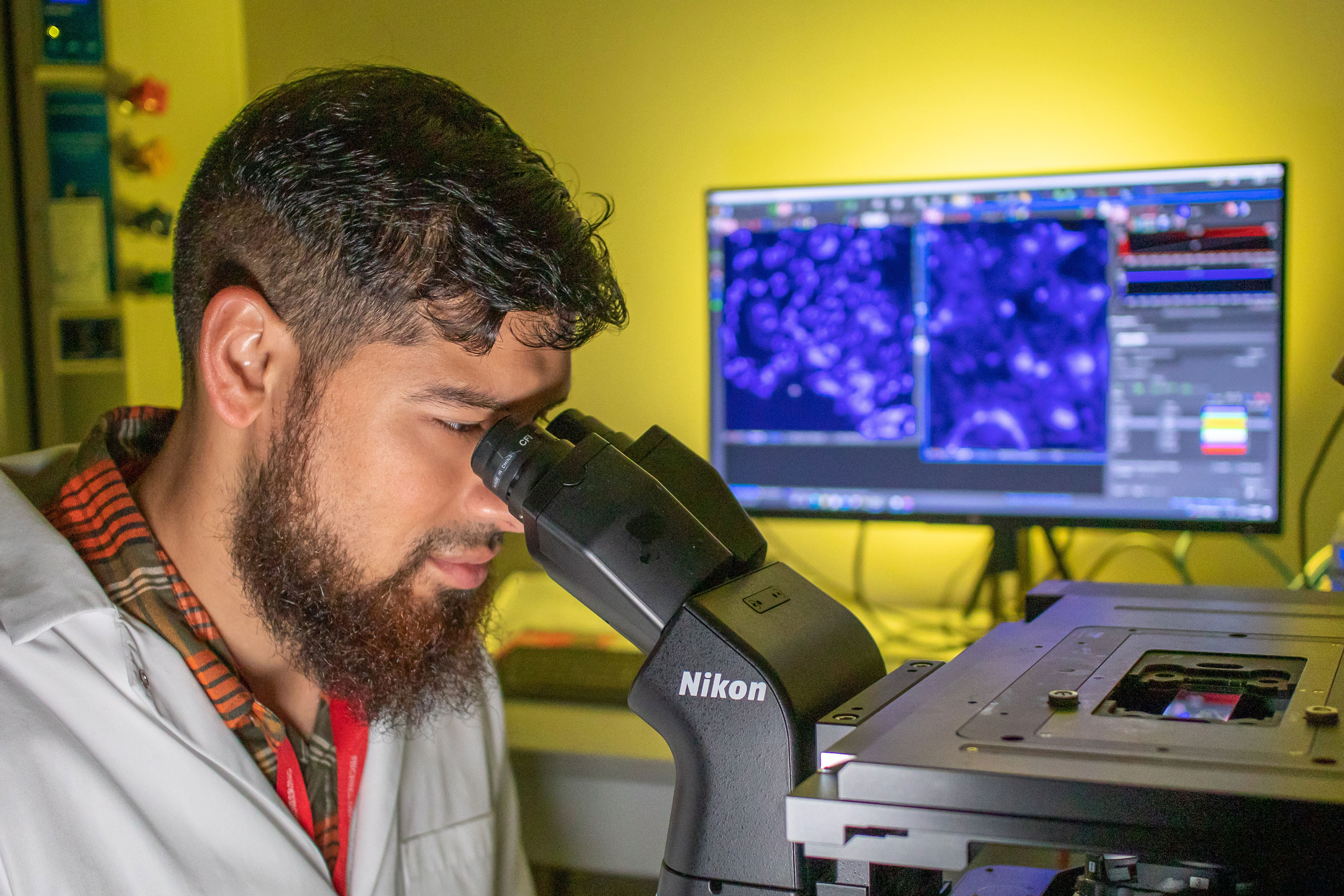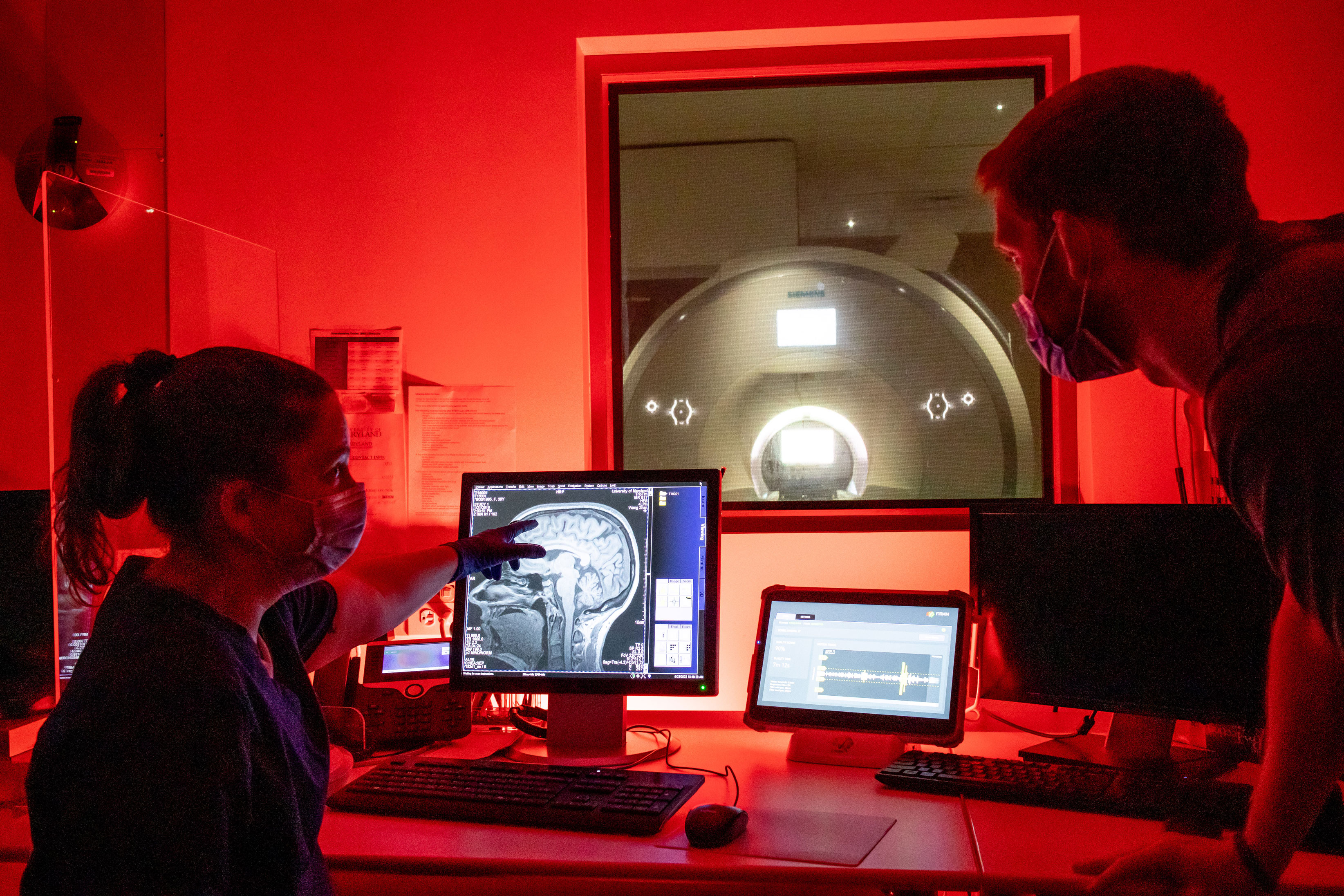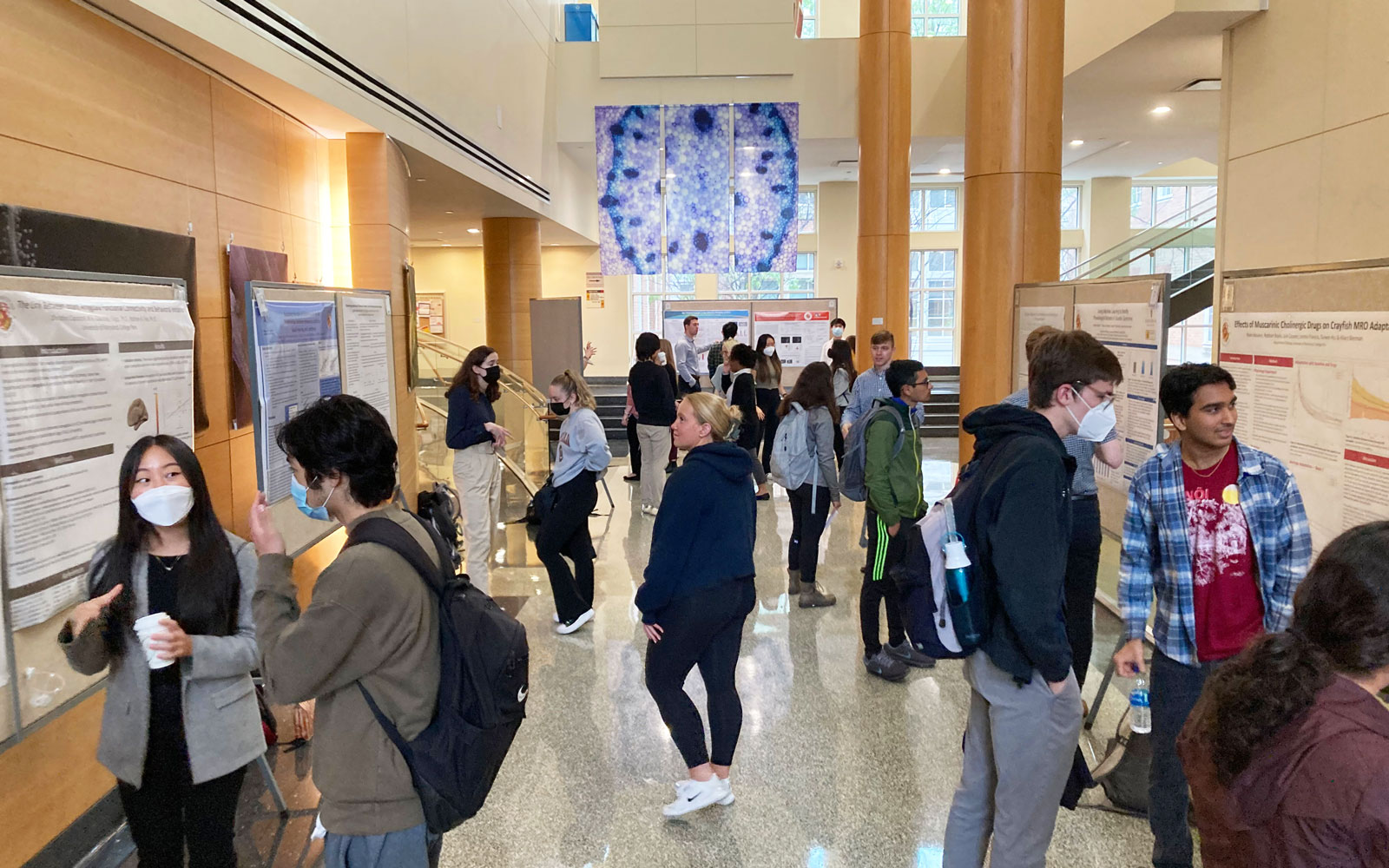News Story
Autism Research Resonates in Hearing-Focused Project

Two UMD researchers funded by a recent Brain and Behavior Institute seed grant are examining whether dysfunction in the networking of the brain's neurons contributes to autism spectrum disorder, manifested in part by an inability to block out background noise. Photo by Stocksy.
The film “Rain Man” created a highly specific view of autism spectrum disorder (ASD) for the public, but robotic speech patterns and a talent for counting cards in Vegas exhibited by Dustin Hoffman’s titular character don’t begin to cover ASD’s myriad clinical presentations. Now, a University of Maryland neurobiologist and electrical engineer are exploring whether this broad diversity within ASD might result from the way that different brain areas are “wired” together.
Questions about hearing are at the heart of the project by Nikolas Francis, assistant professor with joint appointments in biology and the Brain and Behavior Institute (BBI), and Behtash Babadi, associate professor of electrical and computer engineering with an appointment at the Institute for Systems Research.
ASD affects 1 in 36 children, according the U.S. Centers for Disease Control, and is characterized primarily as a communication disorder. It often entails issues with attention or listening—particularly a difficulty habituating to sounds and distractibility by background noise, leading some with the diagnosis to rely on ear protection or headphones. This set of symptoms made Francis curious about how changes in the auditory system contribute to the condition.
“Neurons in the auditory cortex largely respond to sound,” said Francis, “but our recent findings indicate that those same neurons also encode other kinds of information about perception, memory and decision-making. These factors drive the brain’s total auditory response, and their dysfunction might contribute to autism spectrum disorder.”
To test their theory, Babadi and Francis are investigating brain activity in a mouse model of ASD. These mice have an underdeveloped corpus callosum, the structure that mediates interactions between the brain’s left and right halves, causing the brain to struggle to send signals across distant areas. Roughly 30% of individuals with an underdeveloped or absent corpus callosum fit the diagnostic criteria for ASD.
Francis used the BBI Small Animal Magnetic Resonance Imaging core (SAMRI) to perform high-resolution structural scans on the mice and quantify their deficits in corpus callosum development. The team then designed experiments to quantify brain network activity while mice performed tasks that require listening or attending to sounds.
“For decades, neuroscientists have looked at neurons in isolation,” said Babadi. “However, if you think about a disorder like autism, it could be that each individual neuron in the brain is working fine, but they can’t form networks together to collaboratively compute and perform a task.”
The team expects functional MRI scans at the SAMRI to reveal a decrease in cross-area activation in the mouse brain, but a lack of communication between distant brain areas may be only part of the story. An ongoing hypothesis about a source of autism’s symptoms is that while the entire brain may be underconnected, local areas of the brain may suffer from over-connectivity. For instance, attending to a sound may be difficult because areas of the brain activated by sound are too well wired up, potentially explaining why some individuals with autism have trouble blocking out background noise. Francis and Babadi expect to see increased activity within local brain networks using two-photon microscopy, a form of calcium imaging capable of seeing the individual activity of thousands of neurons in a single field of view.
Francis credits a recent BBI seed grant award for promoting the collaboration with Babadi, since the focus on ASD is a new research topic for both investigators.
“Cutting-edge neuroscience is increasingly moving toward the necessity for collaboration among specialists as opposed to one individual who has all the skills,” he said.
###
Writer: Nathaniel Underland, underlan@umd.edu
About the Brain and Behavior Institute: The mission of the BBI is to maximize existing strengths in neuroscience research, education and training at the University of Maryland and to elevate campus neuroscience through innovative, multidisciplinary approaches that expand our research portfolio, develop novel tools and approaches and advance the translation of basic science. A centralized community of neuroscientists, engineers, computer scientists, mathematicians, physical scientists, cognitive scientists and humanities scholars, the BBI looks to solve some of the most pressing problems related to nervous system function and disease.
Published April 28, 2023
